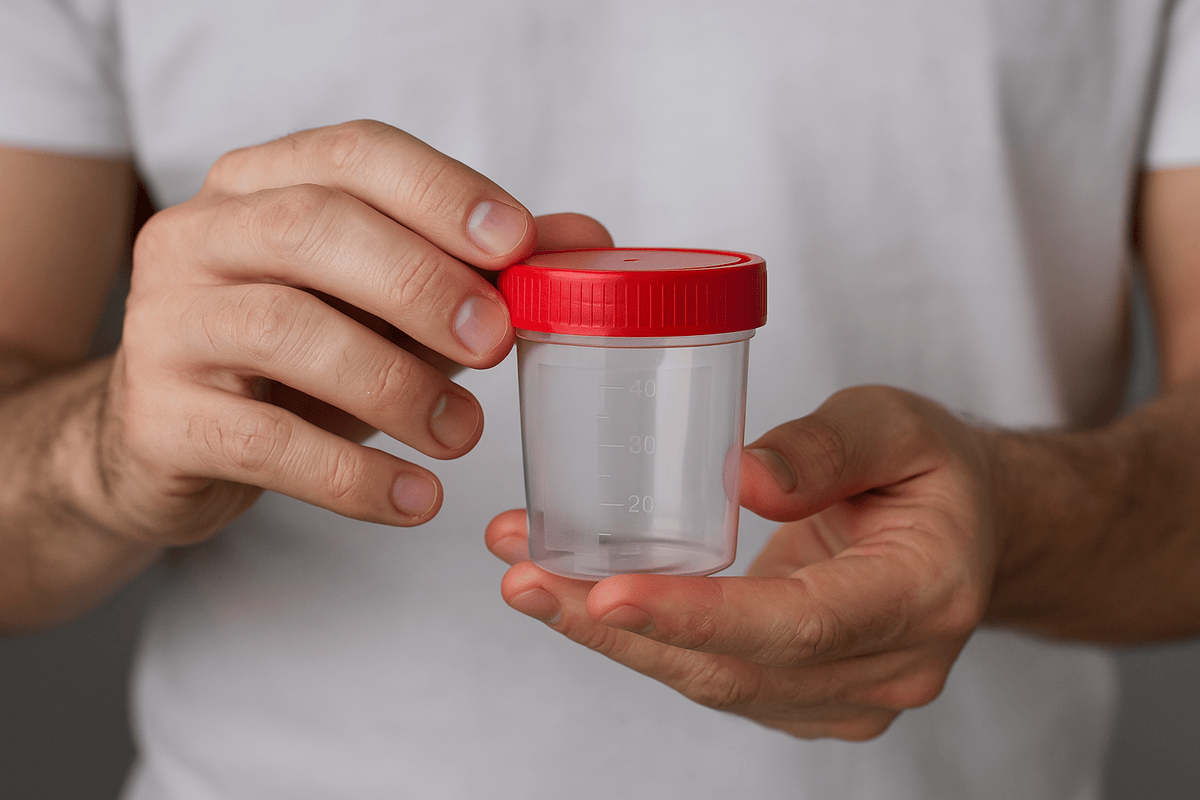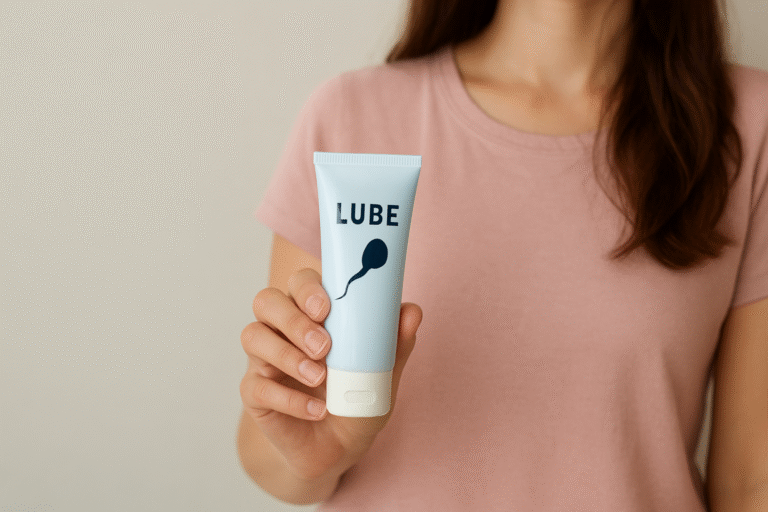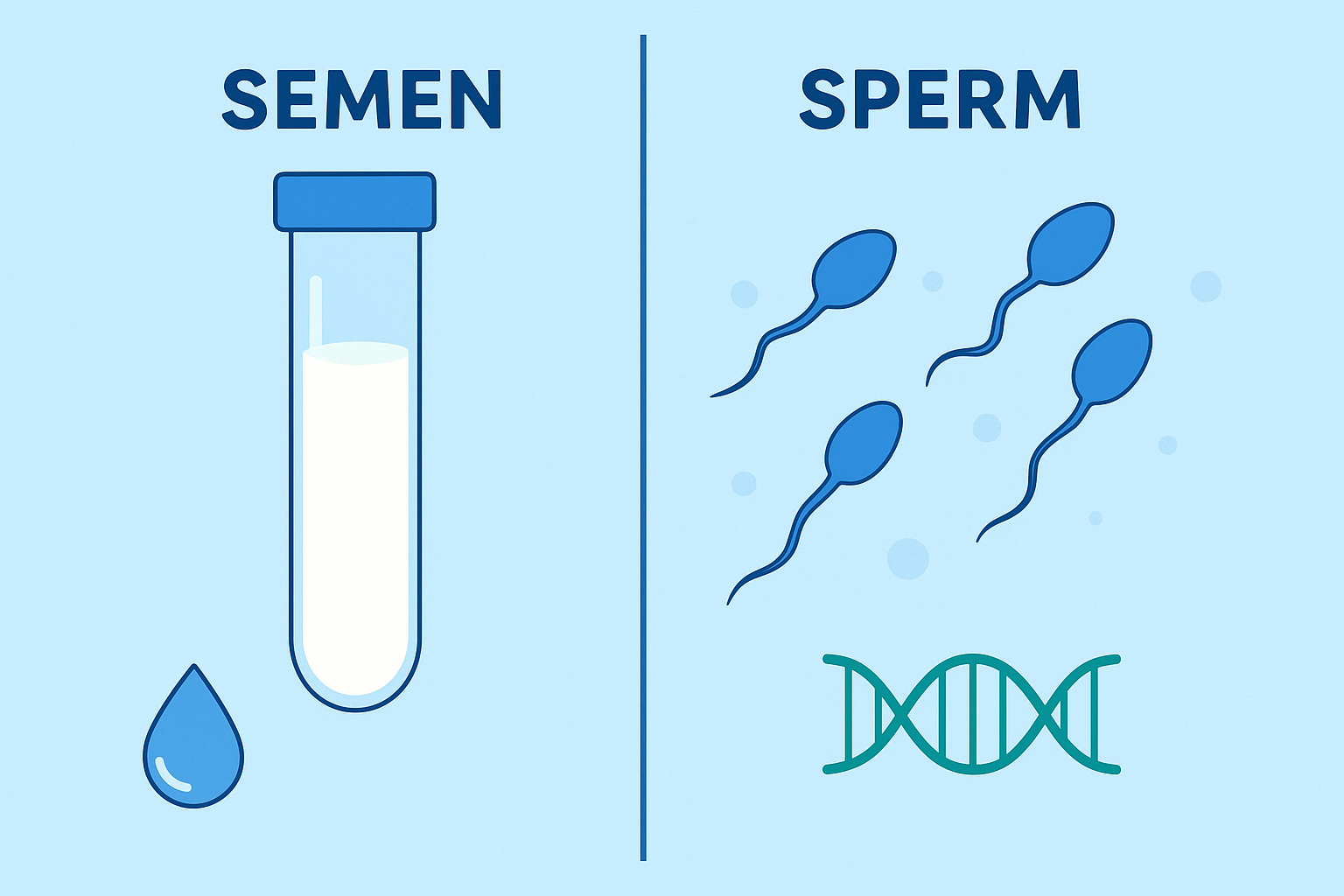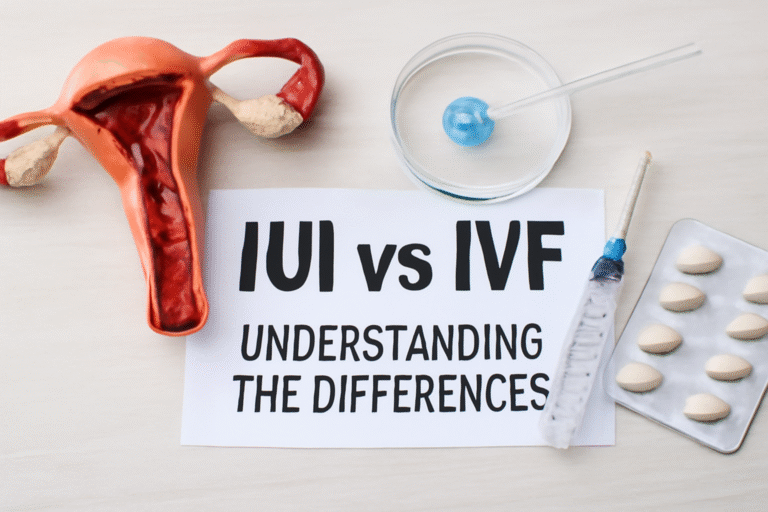The color, consistency, and volume of semen can be a surprising window into a man’s overall health, and noticing a change, especially a yellowish sperm color, can understandably cause concern and raise immediate questions about fertility and underlying health conditions. It’s a topic often shrouded in silence and anxiety, but it’s far more common than you might think. The central question echoing in the minds of many men is stark and urgent: Is yellowish sperm good or bad, and more importantly, can it affect my ability to father a child? This detailed guide is designed to demystify this very issue.
We will delve into the myriad causes of sperm discoloration, separating harmless dietary influences from potential red flags that require medical attention. Our mission is to provide you with accurate, evidence-based information, empowering you to understand your body and take the proper steps toward optimal reproductive health. The journey to uncovering the truth about why your sperm is yellowish and its direct correlation with fertility starts here, offering clarity and peace of mind.
What Does Normal, Healthy Semen Look Like?
Before we can accurately diagnose an abnormality, we must first establish a baseline for normal function. Several glands, including the seminal vesicles, prostate gland, and Cowper’s glands, secrete the fluids that combine to form semen, the complex mixture ejaculated during orgasm. It serves as a protective transport medium for sperm cells, providing them with nutrients and a conducive environment for their journey. Healthy semen typically appears opalescent or whitish-gray but can sometimes show a slight yellowish tint or be completely clear.
The consistency is generally gelatinous or viscous immediately after ejaculation, liquefying into a more watery substance within 5 to 40 minutes due to enzymes produced by the prostate gland. Variations in shade from white to light gray or even a very faint yellow are typically within the typical spectrum. They are influenced by factors such as the frequency of ejaculation and hydration levels. Understanding this baseline is the first step in identifying when a color change, particularly a pronounced yellow hue, may signal something that requires closer examination.
Factors That May Increase Your Chances of Having Twins
Common Causes of Yellowish Sperm
A yellowish sperm appearance is not a diagnosis in itself but rather a symptom that can stem from a wide array of causes. These range from completely benign and temporary lifestyle factors to more serious medical conditions that necessitate professional intervention. Pinpointing the exact reason why your sperm is yellowish often involves a process of elimination, considering your recent habits and any accompanying symptoms.
Benign and Reversible Lifestyle Factors
Often, the most common reasons for a temporary change in semen color are the simplest ones, rooted in our daily choices. These causes are generally harmless and can be easily corrected.
Diet and Nutrition
This is, by far, the most frequent culprit. Certain foods and supplements are rich in pigments that can alter the color of bodily fluids, including semen. Highly sulfurous foods, such as garlic, onions, and asparagus, or those rich in beta-carotene and other pigments like turmeric, beets, and dark leafy greens, can impart a yellowish or even orange hue. Similarly, artificial food colorings found in sodas, candies, and processed foods can also lead to temporary discoloration.
Infrequent Ejaculation
If you have gone a prolonged period without sexual activity or masturbation, semen may accumulate in the seminal vesicles and become more concentrated. This older semen can oxidize slightly, leading to a darker, more yellow appearance compared to freshly produced semen. This is usually resolved quickly after a couple of ejaculations.
Dehydration
Adequate hydration is crucial for maintaining the standard dilution and composition of all bodily fluids. Dehydration concentrates your semen, which intensifies its natural color and makes a faint yellow appear more pronounced. Simply increasing your water intake can often return your semen to its usual whitish hue within a day or two.
Aging and Medications
The natural aging process can sometimes lead to changes in semen color and consistency. Furthermore, certain prescription medications are known to cause this side effect. Some antibiotics, vitamins (especially high-dose B vitamins), and certain chemotherapy drugs can cause yellowish sperm as the body processes and eliminates them.
Medical Conditions That Cause Yellow Semen
If lifestyle factors are not the cause, a persistent yellowish color may point to an underlying medical issue. These conditions often present with other symptoms, making it essential to consider the complete clinical picture.
Jaundice
This is a systemic condition in which the body accumulates excessive bilirubin, a yellow pigment formed during the breakdown of red blood cells. Jaundice causes a distinct yellowing of the skin and the whites of the eyes (sclera), and this discoloration can also extend to bodily fluids, including semen. Jaundice itself is a symptom of liver problems such as hepatitis, gallstones, or liver cirrhosis.
Urine in Semen (Hematospermia)
While typically associated with blood, a small amount of urine remaining in the urethra (the tube that carries both semen and urine out of the body) can mix with semen during ejaculation. As urine is naturally yellow, this can cause the entire ejaculate to take on a yellowish tint. This is more common if you ejaculate shortly after urinating.
Prostate Infection (Prostatitis)
An infection or inflammation of the prostate gland can lead to changes in semen. Alongside symptoms like pelvic pain, painful urination, and difficulty emptying the bladder, prostatitis can cause semen to appear yellow, sometimes even greenish, due to the presence of white blood cells and infectious pus.
Sexually Transmitted Infections (STIs)
Certain STIs are a prime medical cause of discolored semen. Gonorrhea and chlamydia, in particular, can cause a yellowish or greenish, pus-like discharge from the penis, which can mix with semen. This is almost always accompanied by other symptoms such as pain or burning during urination, discharge, or testicular pain.
Leukocytospermia
A high concentration of white blood cells (leukocytes) in the semen characterizes this condition. These cells are part of the body’s immune response, and their presence in large numbers indicates inflammation or infection somewhere in the reproductive tract, often the prostate, seminal vesicles, or epididymis. This influx of white cells can give the semen a yellow tint.
Can Yellowish Sperm Affect Fertility?
This is the heart of the matter for most men. The answer is not a simple yes or no; it is entirely dependent on the underlying cause of the yellowish sperm. The color itself is not what directly impacts fertility; rather, it is the condition causing the color that may have implications.
The color change is a symptom, not the disease.
- When Yellow Sperm is NOT a Threat to Fertility: Dietary choices, infrequent ejaculation, dehydration, or certain medications can give your sperm a yellowish color, but they almost certainly do not affect your fertility. These factors alter the appearance of the seminal fluid but do not damage the sperm cells themselves, their motility (movement), or their morphology (shape). Correcting the lifestyle factor will resolve the color issue and eliminate the need for further action.
- When Yellow Sperm CAN Indicate a Fertility Problem: If an underlying medical condition causes the discoloration, that condition itself may impair fertility. For instance:
- Infections (Prostatitis, STIs): These can cause inflammation that damages the delicate sperm-producing structures in the testes, obstructs the reproductive ducts, or creates an unhealthy environment for sperm, reducing their motility and viability.
- Leukocytospermia: High levels of white blood cells generate reactive oxygen species (ROS), which are harmful molecules that cause oxidative stress. This stress can severely damage sperm cell membranes and DNA, leading to reduced sperm count, poor motility, and increased DNA fragmentation, all of which are major contributors to male infertility.
- Jaundice: Severe liver disease leading to jaundice can cause hormonal imbalances and a general decline in health that can negatively impact sperm production.
Therefore, you should evaluate a persistent yellowish appearance in your sperm, especially with other symptoms, not for the color itself, but because it could signal a condition that affects fertility.
Diagnosis and Treatment: What to Expect
If you see a doctor for yellowish sperm, they will take a comprehensive approach to diagnose the root cause.
- Medical History and Symptom Review: They will ask detailed questions about your diet, sexual history, frequency of ejaculation, and any other symptoms you are experiencing.
- Physical Examination: This may include an examination of the genitalia.
- Diagnostic Tests: These are crucial for a definitive diagnosis and may include:
- Semen Analysis: This is the cornerstone test. It evaluates semen volume, sperm count, motility, and morphology, and will also check for the presence of white blood cells (indicating leukocytospermia) or bacteria.
- Urinalysis and Urine Culture: To check for a urinary tract infection or STIs.
- STI Testing: Specific swab or urine tests to screen for gonorrhea, chlamydia, and other infections.
- Blood Tests: The next step is to test for a systemic infection by measuring white blood cell count and to evaluate liver function if jaundice is a possible cause.
Treatment is entirely directed at the underlying cause:
- For infections: A course of antibiotics is the standard treatment.
- For leukocytospermia: Treatment may include anti-inflammatory medications or antioxidants, along with therapy for any identified source of inflammation.
- For dietary causes: Simple nutritional modifications are recommended.
- For dehydration, increasing fluid intake is advised.
Conclusion: Empowering Yourself with Knowledge
Discovering that your sperm has a yellowish hue can be disconcerting, but as we have uncovered, it is often a harmless and temporary issue linked to your lifestyle. Understanding the difference between benign causes, such as diet and dehydration, and more serious medical conditions is key to managing your concern effectively. While the question “Is yellowish sperm good or bad?” has a nuanced answer, the overarching truth is that persistent yellowish sperm, particularly when accompanied by other symptoms, is a clear signal from your body that deserves attention.
Azoospermia Definition: The Absence of Sperm in Semen
It is not the color itself that you should fear, but the potential underlying condition it might represent. By listening to your body, recognizing the red flags, and seeking timely professional advice, you are taking a proactive and decisive step toward safeguarding not only your fertility but also your overall health. Remember, open communication with a healthcare provider is the most effective strategy to address any concerns and ensure your peace of mind.




